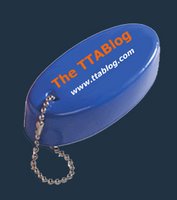In a decision issued exactly one year after oral argument, the Board sustained in part North Face's Section 2(d) opposition to registration of the mark shown below left, for a variety of goods and services in classes 7, 11, 12, 16, 25, 35, and 37, including motorcycles, electric bicycles, various clothing items, and auto repair services, in view of the registered mark shown below right, for footwear, backpacks, sleeping bags, and clothing.
The North Face Apparel Corp. v. Sanyang Industry Co., Ltd., 116 USPQ2d 1217 (TTAB 2015) [precedential].
Applicant's Motion to Amend: The Board first dealt with Applicant Sanyang's motion to amend its answer to assert as an affirmative defense that, if the Board should find that Applicant was not entitled to registration with respect to some but not all of the goods or services listed in its two applications, then Sanyang should be allowed to amend its two applications to conform to the Board’s findings. The Board denied the motion, pointing out that Sanyang failed to specify the particular goods or services that it would delete from its applications.
Applicant’s motion would essentially impose on Opposer the requirement to prove likelihood of confusion with respect to each of the numerous goods and services identified in the seven classes of Applicant’s applications, as opposed to showing likelihood of confusion with respect to one or more (but not necessarily all) goods or services in each class of the applications. ***This would also require the Board to decide the issue of likelihood of confusion with respect to each of the hundreds of goods and services, a decision that Applicant would then effectively obviate as far as the goods or services for which likelihood of confusion was found.
The Marks: North Face contended that Sanyang's mark is merely North Face's mark turned on its side, and it pointed to the statement that Sanyang made in its application that its mark is a stylized "S". Sanyang asserted that its mark has a "a textured or three-dimensional effect"and that the orientation of its mark changes the visual impression so that the mark resembles "a forward-moving arrow, or a wheel over which an arrow is superimposed, to suggest a wheel in motion."
The Board observed once again that the proper test for assessing two marks is not a side-by-side comparison of the marks, since "consumers do not necessarily have the luxury of making side-by-side comparisons between marks, and must rely upon their imperfect recollections."
Sanyang's description of its mark as an "S" design was not considered an admission, but rather merely "illuminative of shade and tone" in connection with the Board's determination as to the meaning and commercial impression of the mark.
The Board found that, on the whole, the similarities between the marks outweighed the dissimilarities. It noted the lack of evidence of third-party use of "S" design marks; such evidence would have made the differences in the marks more significant. It concluded that the first
du Pont factor, the similarity or dissimilarity between the involved marks, weighed in favor of North Face, but it noted that “that similarity is not a binary factor but is a matter of degree.”
The Goods and Services: Because some of Sanyang's Class 25 goods were identical to the goods in North Face's pleaded registrations, the Board sustained the opposition as to Class 25.
See Tuxedo Monopoly (likelihood of confusion must be found as to the entire class if there is likely to be confusion with respect to any item that comes within the identification of goods or services in that class).
Sanyang acknowledged that its retail stores featuring clothing, textiles, and clothing accessories "are related to [Opposer’s] class 25 goods." The Board therefore sustained the opposition as to Class 35.
The relatedness of the remaining goods and services of Sanyang to North Face's goods was not so clear, and opposer's contentions regarding their complementary nature were "not very specific." North Face maintained that Sanyang's clothing and equipment are designed for outdoor activities, including biking or riding a scooter, and that the riders are likely to wear clothing designed for outdoor activities, or carry backpacks and duffel bags (North Face's goods).
As to Sanyang's class 7 goods (lawnmowers, boat engines, and mechanical parts), North Face did not explain how any of those goods were related to its goods, and so the Board dismissed the opposition as to Class 7. As to class 11, the differences between Sanyang's goods (
e.g., vehicle reflectors and vehicle headlights), coupled with the differences in the marks, led the Board to conclude that confusion was not likely.
As to class 12, there was no evidence to that consumers would believe that Sanyang's electric bicycles would emanate from or be sponsored by North Face. The evidence did show that clothing and backpacks, on the one hand, and Sanyang's electric scooters, mopeds, and motorcycles, on the other, may be sold through the same channels of trade. Although this
du Pont factor favored North Face, the differences in the goods and the marks resulted in the Board dismissing the opposition as to this class of goods.
As to Sanyang's class 16 goods, there was no evidence showing how these goods (e.g., stickers) are related to North Face's goods.
Finally, as to Sanyang's class 37 services (
e.g., automobile and motorcycle maintenance and repair), the difference between the involved goods and services was dispositive.
In sum, the Board sustained the opposition as to Sanyang's class 25 goods and its class 35 services, but dismissed the opposition as to classes 7, 11, 12, 16, and 37.
Read comments and post your comment here.
TTABlog comment: So North Face batted about .284 in this one. That's well above the Mendoza line, but hardly a Hall of Fame number. By the way, Sanyang's two applications were based on Section 1(a) actual use, despite the "laundry list" of goods and services.
Text Copyright John L. Welch 2015.


































